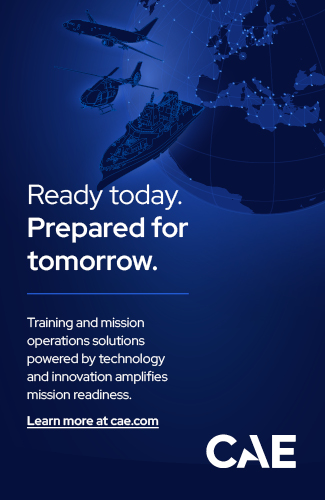Stovepiping is a process in which the observer sees daylight through a narrow chimney and mistakes this for the horizon. This phenomenon is widespread and is often attributed to incomplete intelligence ("need to know"). The former Inspector General has asked the military branches to submit a "target picture" for their respective areas. The navy has drawn up a "target picture from 2035". The new Inspector General is now tasked with placing the various target images next to and on top of each other. However, the sum of the individual target images does not make a whole! What is needed here is an energetic, organising hand, which has been lacking up to now.
It can be assumed that all military branches have derived their target images correctly and formulated them appropriately. This certainly applies to the Navy's 2035+ target picture! Now the Inspector General - aware of the budgetary situation and the political objectives of the Federal Government - must sort out and prioritise. This means that no target picture, regardless of the military component, will be realised one-to-one. The task is to create a security policy distillate that reflects the current challenges across the board and possible developments on the horizon (in terms of military policy and technology).
Let's return to the Navy's 2035+ vision. On a positive note, the navy is not sticking to the status quo, but is looking ahead technologically: "At the same time, technical innovations are massively changing the conditions in the maritime theatre of operations. New underwater sensor technology and comprehensive land, air and space-based reconnaissance are making the battlefield increasingly transparent. The resulting large amounts of data are used by complex IT systems to generate comprehensive situation reports, in future also with the help of artificial intelligence."
With this categorisation and the reference to the main operational areas ("High combat readiness and presence in the North Atlantic, North Sea and Baltic Sea operational areas even in peacetime"), the naval command has struck the basic tone that will not be ignored in other military sub-areas and "Unter den Linden". The (maritime) situation picture also includes the Navy's contribution to the protection of critical maritime infrastructure, on which the Navy has presented a thought paper that is well worth reading.
At this point, reference should be made to the challenge posed by unmanned systems. In this regard, we read in the target vision: "It is already important to test the use and operation of unmanned systems with experimental projects and to gather experience. In this way, the navy can ultimately enter into risk-minimised procurement in the quantities shown."
With small unmanned systems, the navy is taking a path that takes account of personnel and financial limitations. There will be a discussion - also on these pages - about the Future Combat Surface System, which is intended to supplement a limited number of corvettes.
"Under the Linden", the Russian invasion of Ukraine is largely perceived as a "land war with new elements" (provision of near real-time reconnaissance by the Americans, drones and EloKa, complex logistical support). Nobody in Berlin will deny that this conflict with the Black Sea (Crimea) and the Baltic Sea (Baltic states) also has a maritime component. Well-meaning people will also recognise the importance of the Baltic Sea in the context of high north.
It is foreseeable that there will be a discussion in maritime circles about the appropriate number of future flagstaffs; "lord seal keepers" will take up the pen. However, this does not necessarily do justice to the future role of unmanned systems or the expectations of politicians. The 2035+ target image is a significant contribution to the security policy discourse in the Republic.
How do you override the stovepipe factor? By tearing down dividing chimney walls; a shared, large fireplace allows a view of the vast horizon.
Heinz Schulte is a member of the Executive Board of the German Maritime Institute.
Heinz Schulte











One Response
Looking ahead to 2035+, we should be careful about making specific statements about future platforms. At the end of VA Krause's service, he spoke of the Indian Ocean as the future Mare Nostrum of the German Navy. Who can really predict today what crises and conflicts we Europeans will have to overcome in 2035?